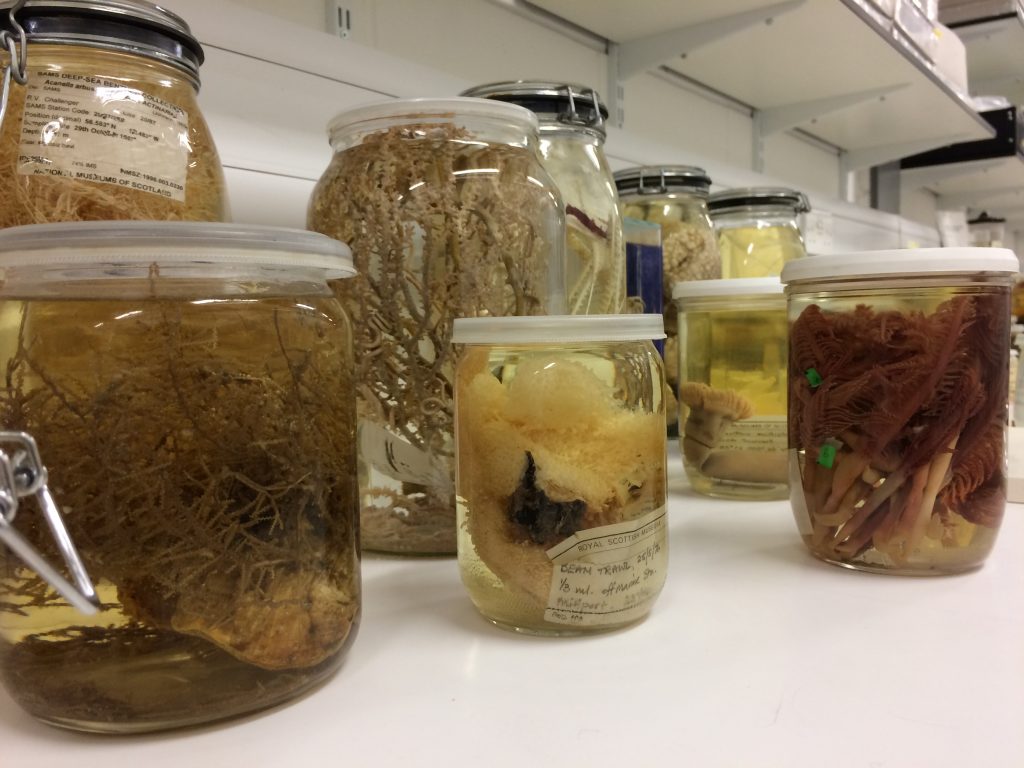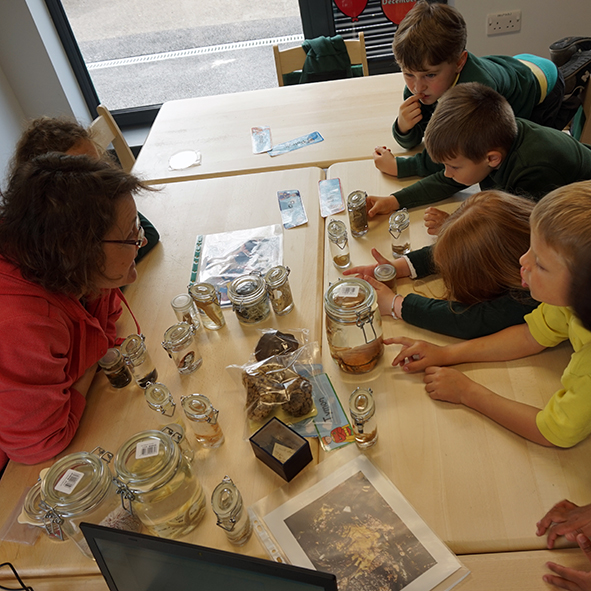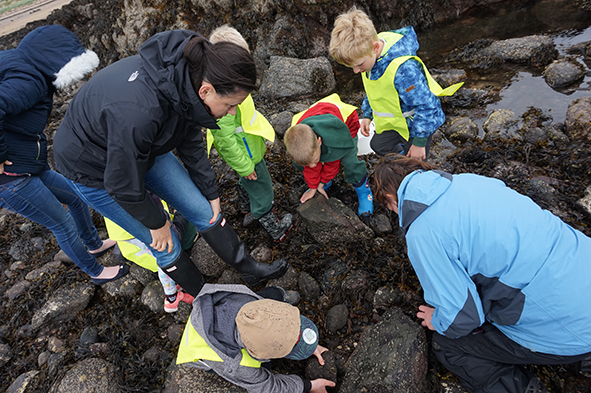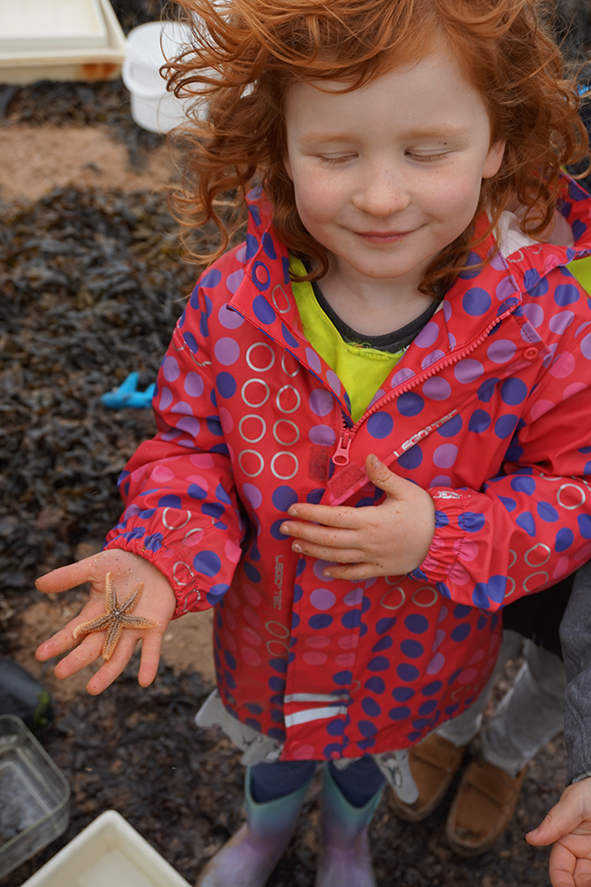If there were a line with science on one side and art on the other, I definitely wouldn’t fall on the science side. Despite this, a year ago I found myself volunteering to incorporate marine invertebrate specimens into the National Museums Scotland collections, as part of my MLitt in Museum and Gallery Studies at the University of St Andrews.
My initial fears were put to rest when I discovered I had genes on my side. During a conversation with my grandmother, I learnt that Arthur Dendy, a leading authority on Porifera, was my great-grandfather.
Project 1
I quickly fell in love with the Invertebrate section with its sterile quietness, that wonderful background humming, the row upon row of hundreds of thousands of specimen-filled glass jars. I spent days cataloguing, labelling and putting away specimens in an environment that was the polar opposite of my chaotic day-to-day life with young children. Fiona and Sankurie, the Invertebrate Biology Curators, were easy to work with. They were welcoming, trusting, helpful, and most of all extremely understanding of my non-science background.

Project 2
Apparently you should never work with children or animals. Taking this into account I persuaded Fiona and Sankurie to work with me on my second-year project: an exhibition of Scottish sea creatures interpreted and curated by a class of five-year-olds. What could possibly go wrong…?
To ease the children and teachers gently into the topic and to ensure they had a solid understanding of the wonders of Scottish Marine invertebrates we planned a number of practical workshops.
Classroom visit
First up was an in-school session. We set up two P1 classrooms with four stations that the children would rotate around in groups. The Meet the Expert tables were hosted by Fiona and Sankurie, where they introduced the children to a number of marine invertebrate specimens, most of which the children would be looking out for on their upcoming field trip. Despite the inevitable questions, “Are they dead?” and “How did you kill them?” the children were genuinely enthused.

Natural Sciences staff Ashleigh and Rachel were on hand to help the children sort shells by shape. The teachers took the children through a simple shell identification key, and the classroom assistants had the more creative task of facilitating some drawing. The activities were varied enough to keep even the shortest of attentions engrossed, with both children and teachers thoroughly enjoying themselves. All involved were now deemed ready for a day of intrepid shoreline adventures.
Seaside Safari
On a typically cold and damp Scottish summer day we traipsed 48 children, and a few sceptical teachers, classroom assistants and parents down to Yellowcraigs in East Lothian. The first Seaside Safari aimed at five-year-olds that National Museums Scotland has ever facilitated.

As we ventured out onto the rocks with the first group we began to wonder what on earth we’d gotten ourselves into. The rocks were treacherous and covered in slippery seaweed. But despite our initial fears (and the inclement weather) we thoroughly enjoyed ourselves, with the children merrily flipping over the rocks to discover secrets beneath, and happily handling a variety of starfish, crabs, fish, sea worms and anemones. Back on dry land, the children were able to take a closer look at their finds as Fiona and Sankurie explained more about their discoveries. The firm favourite was definitely the starfish.

After each group had taken their turn on the rocks we herded an exhausted, but elated, group of P1s back to their bus, where most of them quickly fell asleep.
Collection Centre visit
Next up was the visit to the National Museums Collection Centre. We split the children into two groups, with one group given a tour of the marine invertebrate and entomology sections, while the second group was introduced to a number of marine invertebrate specimens. The children were asked to pair up and choose a specimen for the planned exhibition. Back at school we discussed the choices they had made; asked them to describe them, tell me why they chose them, and what they liked about them. This information would form the basis of the interpretation for the exhibition.

Exhibition
And now, finally, the exhibition is upon us. Our collection of sea creatures, alongside interpretation and drawings by the children, is now proudly on display in the school’s foyer for all to see.
